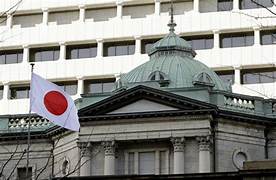Tokyo, Japan – February 2025 – Japan’s inflation rate surged to a two-year high of 4% in January, fueling speculation that the Bank of Japan (BOJ) may soon consider a long-awaited interest rate hike. The increase in consumer prices, driven by rising energy costs, a weaker yen, and global supply chain pressures, has intensified the debate among policymakers about the timing and necessity of monetary policy adjustments.
Inflation Trends and Economic Indicators
The latest data from Japan’s Statistics Bureau shows that the nationwide Consumer Price Index (CPI), excluding volatile fresh food prices, climbed 4% year-on-year in January. This marks the fastest pace of inflation since 2023 and remains well above the BOJ’s longstanding 2% target.
Several key factors contributed to this sharp rise:
- Energy Prices: Japan, which relies heavily on energy imports, has faced elevated costs due to global geopolitical tensions and supply chain disruptions.
- Weak Yen: The Japanese yen has remained weak against the U.S. dollar, making imported goods more expensive and contributing to higher consumer prices.
- Wage Growth: While wage growth has been modest, firms have gradually raised wages to combat labor shortages, which has added inflationary pressure.
- Supply Chain Disruptions: Delays in manufacturing components and rising shipping costs have further pushed prices upward.
The persistent rise in inflation challenges the BOJ’s long-held commitment to ultra-loose monetary policy, which has included negative interest rates and aggressive bond purchases to support economic growth.
BOJ Policymakers Lean Toward Tightening Monetary Policy
In response to the inflation surge, several BOJ policymakers have expressed growing support for a shift in monetary policy. Some members argue that the central bank must act to prevent excessive inflation from eroding household purchasing power and corporate profitability.
BOJ Governor Kazuo Ueda has maintained a cautious stance, emphasizing the need for sustainable wage growth and stable inflation before implementing major policy changes. However, recent remarks from BOJ board members suggest an increasing willingness to consider policy normalization in the near future.
“The inflationary trend appears more persistent than previously anticipated, warranting a reevaluation of our current stance,” said one BOJ policymaker during a recent meeting. “If inflation remains above target and wage growth strengthens, a rate hike should be on the table.”
“Federal Reserve Signals Inflation Risks: Officials Support Pause in Rate Cuts Amid Economic Uncertainty”
Implications for Japan’s Economy and Financial Markets
Impact on Households and Businesses
The rise in consumer prices has placed a burden on Japanese households, which have historically been accustomed to low inflation. While nominal wages have increased in some sectors, real wages—adjusted for inflation—have struggled to keep pace, reducing purchasing power.
Businesses, particularly small and medium-sized enterprises (SMEs), are also facing cost pressures. Higher input costs and import expenses have forced many companies to pass on costs to consumers, potentially dampening domestic demand.
Market Reactions and Yen Volatility
Financial markets have responded to the inflation data with increased speculation over a potential BOJ rate hike. The yen strengthened slightly against the dollar following the announcement, as investors priced in the possibility of tighter monetary policy.
Japan’s benchmark stock index, the Nikkei 225, saw a mixed reaction. While banking stocks gained on the prospect of higher interest rates, export-dependent sectors faced headwinds due to the strengthening yen.
Global and Domestic Challenges Ahead
As Japan navigates this inflationary environment, it faces several domestic and global challenges:
- Geopolitical Uncertainty: Continued geopolitical tensions, particularly in energy-producing regions, could further impact global commodity prices and supply chains.
- China’s Economic Slowdown: As Japan’s largest trading partner, China’s economic performance will play a critical role in shaping Japan’s trade and inflation dynamics.
- Government Fiscal Policies: The Japanese government’s response, including potential subsidies or fiscal stimulus measures, will be key in managing inflation’s impact on households and businesses.
Conclusion: A Pivotal Moment for Japan’s Monetary Policy
With inflation hitting a two-year high, the BOJ faces mounting pressure to reconsider its monetary policy stance. While concerns remain about economic stability and wage growth sustainability, the central bank may be moving closer to a policy shift that could mark the end of Japan’s era of ultra-low interest rates.
Market participants and policymakers alike will closely watch upcoming economic data and BOJ meetings for further signals on the direction of Japan’s monetary policy. Whether the BOJ ultimately decides to hike rates in the coming months or maintains its current stance, its decision will have profound implications for Japan’s economic landscape and financial markets.

